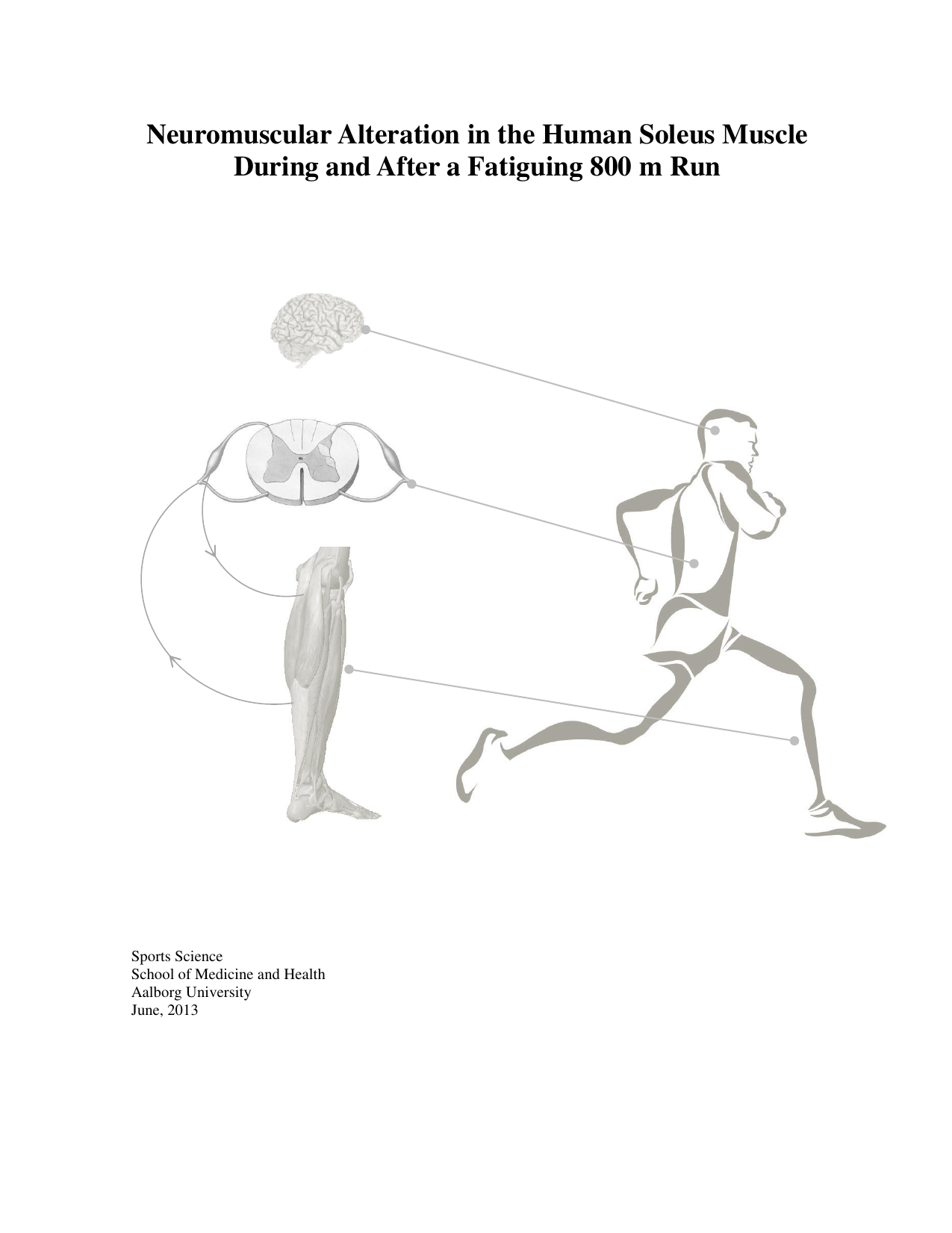
Neuromuscular Alteration in the Human Soleus Muscle During and After a Fatiguing 800m Run
Translated title
Neuromuscular Alteration in the Human Soleus Muscle During and After a Fatiguing 800m Run
Term
4. semester
Education
Publication year
2013
Submitted on
2013-06-02
Pages
59
Abstract
A progressive speed decline during maximal 800m running might be related to limitations of the neuromuscular system. Previously, neuromuscular fatigue has been measured post exercise, but neuromuscular modulation during running to fatigue has never been investigated. 8 male competitive, middle-distance runners performed two submaximal and one maximal 800m run on a treadmill with electrically evoked soleus H-reflexes, maximal M-waves (Mmax) and V-waves every 2 sec at ground contact. Isometric voluntary contractions at 50, 75 and 100% were performed pre and post running with transcranial magnetic stimulation and electrically evoked twitches to assess maximum voluntary contraction (MVC) motor evoked potentials (MEP), silent periods (SP), voluntary activation (VA) and rest twitches (RT). The results showed an decline of MVC -9.7±9.6% (P=0.049), VA -9.3±7.3% (P=0.026) and RT -28.5±15.7% (P=0.004) and an increase of MEP 7.4±4.8% (P=0.037) and SP 7.3±4.8ms (P=0.014) post running (all P<0.05). During running an increase in H-reflex 18.1±12.8% (P=0.043) and V-wave 23.9±13% (P=0.038) and an Mmax decrease of -16.06±2.13% (P=0.001) were found from the first epoch of the run compared to the last. Stride-time and rmsEMG was unchanged. The decreased RT and Mmax showed that peripheral fatigue was occurring during 800m of maximal running but the increased H-reflex and V-wave suggests that central factors increased excitability or drive to maintain power output. Thus central mechanisms were possibly not limiting to 800m running. However, decline in MVC and VA post running suggests that central factors were fatigued but the discrepancy might be attributed to the difference in contraction modus.
Documents
